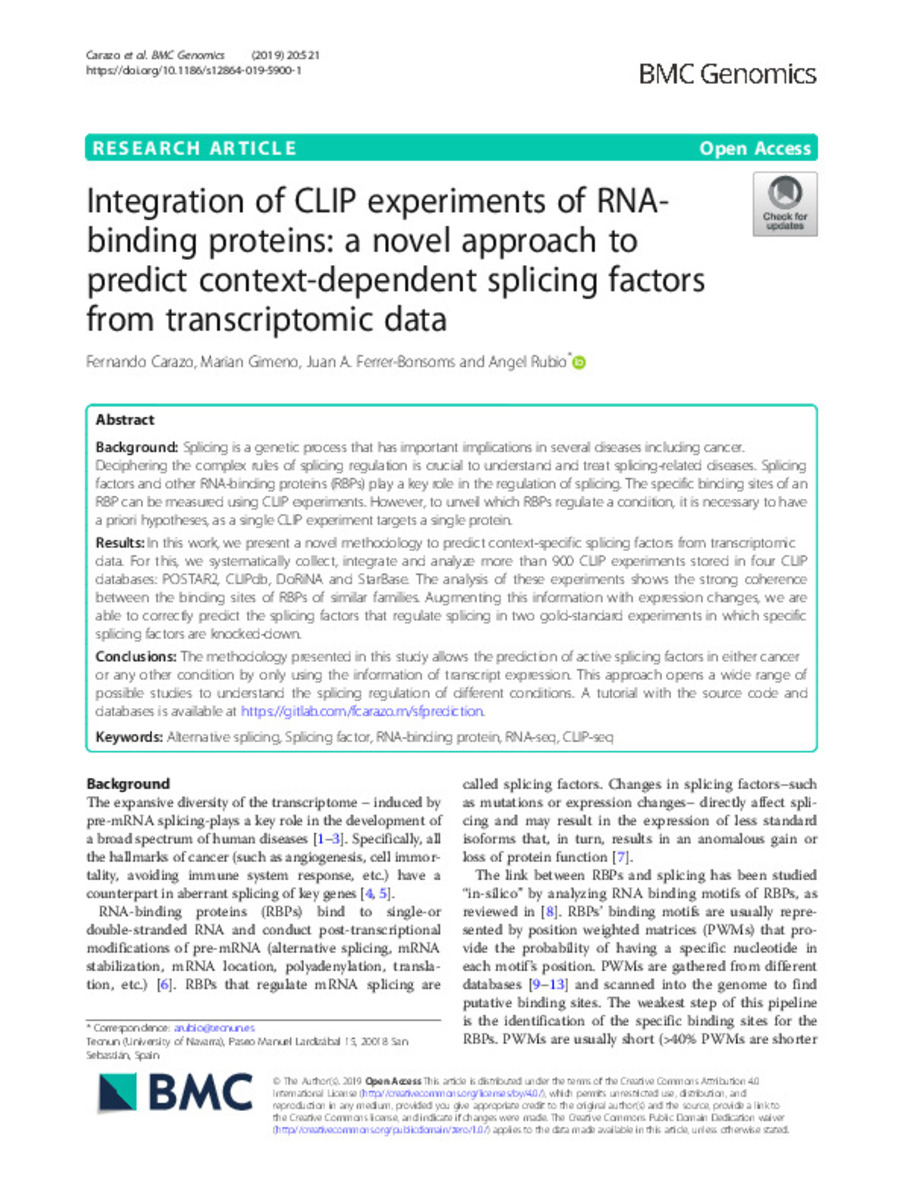Integration of CLIP experiments of RNAbinding proteins: a novel approach to predict context-dependent splicing factors from transcriptomic data
Palabras clave :
Alternative splicing
Splicing factor
RNA-binding protein
RNA-seq
CLIP-seq
Fecha de publicación :
2019
Editorial :
Springer Science and Business Media LLC
Nota:
This article is distributed under the terms of the Creative Commons Attribution 4.0
International License (http://creativecommons.org/licenses/by/4.0/), which permits unrestricted use, distribution, and
reproduction in any medium, provided you give appropriate credit to the original author(s) and the source, provide a link to
the Creative Commons license, and indicate if changes were made. The Creative Commons Public Domain Dedication waiver
(http://creativecommons.org/publicdomain/zero/1.0/) applies to the data made available in this article, unless otherwise stated.
Cita:
Carazo Melo, F.(Fernando); Gimeno, M. (Marian); Ferrer-Bonsoms, J.A. (Juan A.); et al. "Integration of CLIP experiments of RNAbinding proteins: a novel approach to predict context-dependent splicing factors from transcriptomic data". BMC Genomics. 20 (521), 2019, 1 - 11
Aparece en las colecciones:
Estadísticas e impacto
0 citas en

0 citas en

Los ítems de Dadun están protegidos por copyright, con todos los derechos reservados, a menos que se indique lo contrario.







